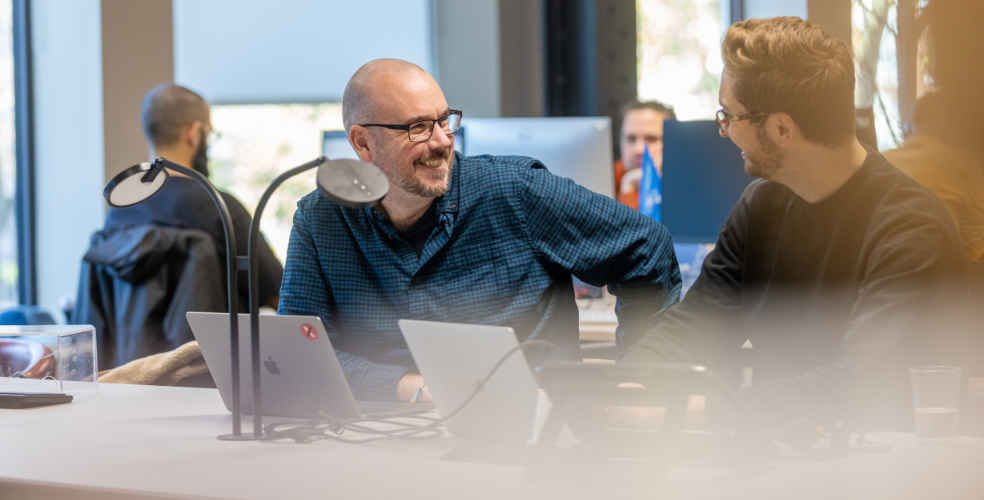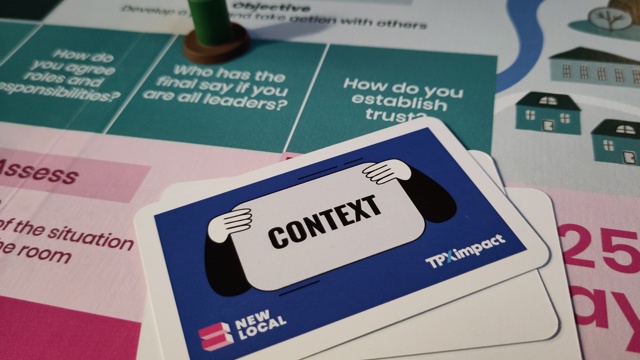There’s a lot of debate about what service design is and what it isn’t; user experience design, design thinking, human-centred design, business analysis etc. To me, it’s a mix of all those things and more. Better minds than mine have tried to define it and have incurred the wrath of others, so a better question is, what distinguishes a good service from a bad service, and how can we implement more of the former and less of the latter?
What is a service?
A service is simple: it’s all the things that help a person to do something; accomplish an objective, reach a goal. For example, a service might help you learn to drive, sponsor a child, inter ashes, visit a National Trust property or organise a strategy away day.
Good services are verbs, bad services are nouns…
This is the motto the Government service design teams live by. They have removed the need for a person to know what the Government calls things in favour of how a person would describe the thing that they need to do, like buy a house, or become a childminder. A service is a verb that comes naturally from a given situation that cuts across transactions, websites, call centre menus and departments.
Why are good services important?
Bad services cost money, both directly and indirectly. It costs money directly because an organisation spends extra time supporting people who are trying to navigate their service and failing. It costs money indirectly because poor experiences turn into negative brand perception, which can jeopardise income streams and which needs to be countered with PR or better service design.
For example, I ordered a jacket online which arrived with security tags on it. The call centre worker told me that the returns system doesn’t support notes so I should take it back to a store because that would “be easier”. Easier for who? I had ordered the jacket online precisely because getting to one of their stores isn’t easy for me.
Marc Fonteijn, who hosts the Service Design Show on YouTube, sums it up perfectly for me:
“When you have two coffee shops right next to each other, selling the exact same coffee at the exact same price, service design is what makes you walk into the one and not the other, come back more often and tell your friends about it.”
What does good service design aim for?
Based on our simple definition of a service, we at TPXimpact think of service design, at a very high level, as:
“Making services usable, valuable and desirable for all people that interact with them.”
That seems like an obvious statement, but the simplest explanations are always a good starting point. Amid the many lists, diagrams, books, tools and keynotes, it’s easy to lose sight of the fact that service design is about changing outcomes for people, not just designing services.
Note the word all in the sentence. Service design is not just about an organisation’s customers, it’s about employees, suppliers, partners, the community etc. To add to this, Soren Bechmann recently discussed sustainability as a crucial element. Sustainability in two senses: firstly, environmental – leaving the planet a better place than you found it; secondly, economic – balancing a service that is exciting and different with business effectiveness. Taking into account how it will affect all people, can you as a business effectively deliver this new exciting service?
What does it need to consider?
Stealing from both the Government Digital Service’s definitions and the concept behind Practical Service Blueprinting, to design a service to be usable, valuable and desirable the service must be considered in its entirety:
-
from start to finish: whatever job/goal a person is trying to achieve, every step to get them through to completion, including the content they see along the way, must be identified
-
from surface to core: so not only the touchpoints a person directly interacts with while trying to achieve their goal, but also the supporting people, culture, technology, systems, data, processes, policies, legislation and governance
-
across every channel: digital, phone, post, face-to-face and physical
How does TPXimpact do service design?
Understanding this entirety and designing (and implementing!) a service that improves how people experience doing the task they need to do, can be achieved in many ways. There is no set way to “do” service design because context needs to be considered; the service, people who use it, employees, culture, technology, systems, data and market conditions make every service, and the design of every service, unique.
There is however a wide range of common patterns and approaches used in service design. We select from these the tools and methods appropriate to the context of the service we’re working on.
Can designing good services lead to better societies?
Ultimately, service design is about human-centric problem solving. The tools don’t matter, it’s about the mindset and working together. It’s about facilitation and change management.
When we design services with the above mindset, we can protect ourselves from the corrupting influence of technology and capitalism. Put another way, if services are designed to be friendly to all the humans they touch, and friendly to the environment, they will not only be ethically sound but produce value that penetrates further into society than just the bottom line of the company that implemented them.

Transforming data sharing across government
We partnered with CDDO to pioneer a private beta working product that enabled cross government departments to share data.
Read moreOur recent insights
Transformation is for everyone. We love sharing our thoughts, approaches, learning and research all gained from the work we do.

The role of play in building leadership skills
How play can offer local government leaders a powerful tool to break free from rigid structures.
Read more
A game-changing approach to leadership
Radical Leaders: The Game! uses real-world crisis scenarios to challenge local government leaders, fostering collaboration, agility, & community focus.
Read more
Transforming archiving through AI
How artificial intelligence can turn archives into living resources that shape the future while preserving the past.
Read more

